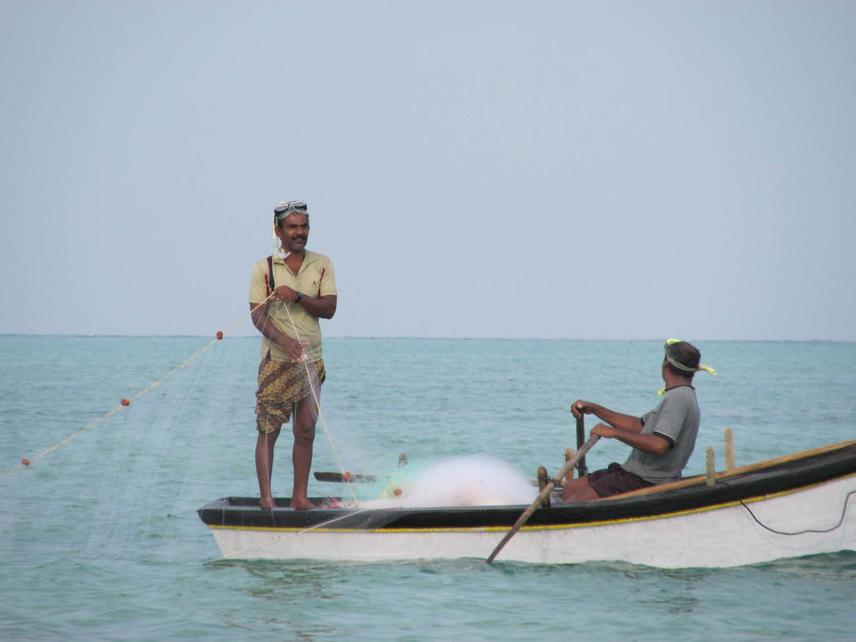Nachiket Kelkar
Other projects
11 Dec 2009
Baselines of Fish Habitat Use, Recruitment and Abundance Across Differentially
The aims of the project are:
1) To understand the long-term dynamics of conflicts between green turtles and fishers in different seagrass meadows of the Lakshadweep atolls;
2) To develop a pre-emptive monitoring program involving discussions with fisher communities, regarding mitigating turtle conflict by adaptive changes in fishing practices, to reconcile benefits to fisheries despite turtle conservation.

Fishermen. © Nachiket Kelkar.
Green turtles are known to be significant ecosystem-modifiers of seagrass meadows.
About a decade ago, fishers in the Agatti lagoon (Lakshadweep) first reported severe reductions in fish catch from seagrass beds, which they attributed to overgrazing of seagrass meadows by green turtles. This perception led to serious conflict between fishers and green turtles in this island. Interestingly, our experimental studies and field observations on green turtle grazing and seagrass responses actually validated these perceptions of local fishers and confirmed the reality and the mechanisms of the conflict situation.
Our subsequent work has indicated that turtles move between lagoons after successively depleting meadows, carrying conflict to new islands. Clearly, tracking dynamic patterns of turtle-fisher conflicts becomes necessary for effective and sustained management of both green turtle populations and local livelihoods. We plan to develop community-based monitoring programs that can facilitate information exchange in order to help fishers track seagrass and fish resources over time, redefine fishing areas and adaptively modify fishing practices used, which in the process can reduce overlap with and retaliatory killing of turtles. While fishers are aware of the ban on turtle hunting, they also suffer from the ecosystem consequences of herbivory, which is difficult to control or manage physically at any level. They also propose many solutions, ranging from culling and compensation schemes to imaginative ones such as planting and maintenance of seagrass meadows in uninhabited islands.
This project plans to explore, through the turtle story, multiple options of conflict management with people actively involved in the process. These involves, on the one hand, evaluating standard approaches that characterize management of direct costs of conflict such as through compensation for gear loss, and avoidance of spatial overlap between fishers and turtles on the other. Addressing indirect impacts of conflict becomes more crucial in this case, by closely assessing changes in lagoon fish abundance and distribution, factors affecting seagrass recovery post-turtle movements, and identifying potential reasons for huge increases in turtle numbers. This can help predict turtle impacts on seagrasses and fishes, to avoid conflict risk rather than confronting it. Conflict perceptions seem to persist until seagrass recovery takes place post turtle movements. Long-term ecological data on this system generated by communities themselves, can yield valuable insight and predictive ability for co-management of lagoon fisheries and green turtle conservation.